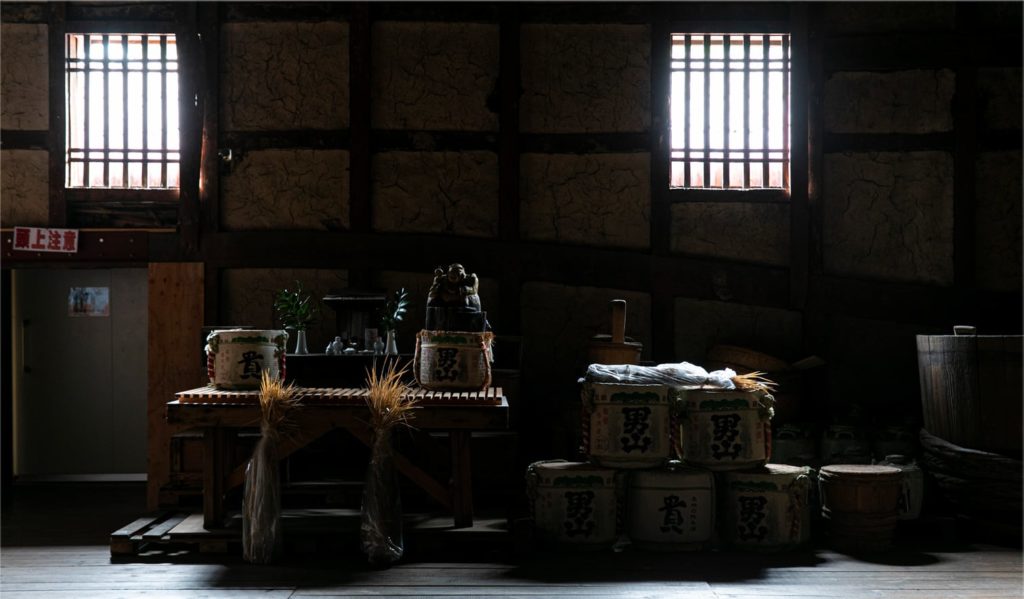Sake at the Heart of Japan

History of Sake
and Bonds with Shinto.
The oldest mention of sake in history is in the Nihon Shoki, the Chronicle of Japan, in a story telling of how the kami Susanoo no Mikoto dispatched the dragon Yamato no Orochi using “eight-fold refined sake,” or yashiori no sake. More concretely, we know that making alcoholic drink from rice dates back to the Yayoi period (300 BCE – 300 CE), when rice cultivation was introduced to Japan. The drink was unlike anything we know today since it required the use of enzymes in human saliva for saccharification. Historians tell us that a major development in sake brewing, the use of rice kōji, was made in the Nara period (710-794 CE). At that time, though, there was no way to control the growth of kōji, so they say that sake making went on all year long. Brewers developed low temperature pasteurization in the mid-Edo period (1603-1868), so that sake could be made when conditions were best and then stored for drinking year-round. These breakthroughs served as the basis for brewing and drinking styles we still follow today. Throughout this long history, sake has been fundamentally linked to Japan’s native faith of Shinto, and used in its sacred ceremonies. Records from the very earliest periods of Japan’s history mention how sake was reserved for the gods and rulers, and some indications show it was also used for medicinal purposes. Today, many Shinto rites are held to soothe the spirit and to pray for a good harvest. Among them, the most important are the spring Haru no Kinensai, and the autumn harvest rite Niiname-sai, where rice and sake are presented to the kami. After the rites are over, a ceremonial banquet called a Naorai is held, where attendants partake of the rice and sake.
presented to the kami.
Once More
to the Heart of Culture
Sake production and consumption has been in a downward trend ever since its peak in 1973. Japanese drinkers have been moving away from sake, and even its role in Shinto rites has been slowly becoming more symbolic. As a result, sake has become an afterthought, and I am growing ever more convinced that without anything to bring it back into the forefront of culture, people will lose that tradition and knowledge.
One of the reasons we here at Nagayama Honke Shuzōjō established an agricultural company in 2019 was to reinvigorate the traditional rites of sake with prayers for the soil and for good rice harvests, and to share the kami’s rice and sake with local people at Naorai. Nagayama has designated November 23rd, the same day as the Niiname no Sai, as the day we distribute our new sake for the year in hopes that this will help the people of Futamatase become reacquainted with sake’s deep connection to Japanese culture.




